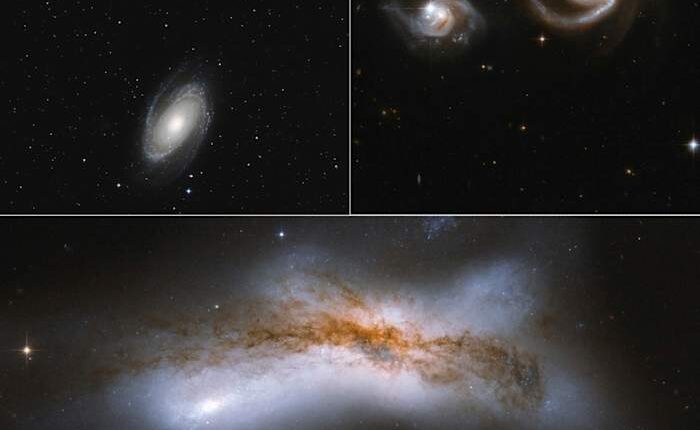
CAPE CANAVERAL, Fla. – It turns out that looming collision between our Milky Way and Andromeda galaxies might not happen after all.
A recent report by astronomers revealed that the chances of two spiral galaxies colliding are lower than previously believed. The likelihood of this collision happening within the next 10 billion years is now estimated at 50-50, which is essentially like a coin flip. However, these odds are better than what was previously thought, and the event is also further in the future.
The team, led by researchers from Finland, expressed in a study published in Nature Astronomy that the predictions about our galaxy’s imminent destruction are exaggerated.
While good news for the Milky Way galaxy, the latest forecast may be moot for humanity.
“We likely won’t live to see the benefit,” lead author Till Sawala of the University of Helsinki said in an email.
Our sun, which is already over 4.5 billion years old, is anticipated to exhaust its energy and perish in another 5 billion years. Before its demise, it will expand to a size that engulfs Mercury, Venus, and potentially Earth. Even if Earth manages to escape being engulfed, it will be left desolate, resembling a charred orb with its oceans evaporated long before.
Sawala’s international team relied on the latest observations by NASA’s Hubble Space Telescope and the European Space Agency’s Gaia star-surveying spacecraft to simulate the possible scenarios facing the Milky Way and next-door neighbor Andromeda. Both already collided with other galaxies in their ancient past and, according to many, seemed destined for a head-on crash.
Past theories put a collision between the two — resulting in a new elliptical galaxy dubbed Milkomeda — as probable if not inevitable. Some predictions had that happening within 5 billion years, if not sooner.
For this new study, the scientists relied on updated galaxy measurements to factor in the gravitational pull on the Milky Way’s movement through the universe. They found that the effects of the neighboring Triangulum galaxy increased the likelihood of a merger between the Milky Way and Andromeda, while the Large Magellanic Cloud decreased those chances.
Despite lingering uncertainty over the position, motion and mass of all these galaxies, the scientists ended up with 50-50 odds of a collision within the next 10 billion years.
“The fate of our Milky Way galaxy is a subject of broad interest — not just to astronomers,” said Raja GuhaThakurta of the University of California, Santa Cruz, who was not involved in the study,
A full-on collision, he noted, would transform our home galaxy from a disk of stars seen as a milky band of diffuse light across the sky into a milky blob. A harmless flyby of the two galaxies could leave this stellar disk largely undisturbed, thus preserving our galaxy’s name.
More work is needed before the Milky Way’s fate can be predicted with accuracy, according to the researchers. Further insight should help scientists better understand what’s happening among galaxies even deeper in the cosmos.
While our galaxy’s fate remains highly uncertain, the sun’s future is “pretty much sealed,” according to Sawala. “Of course, there is also a very significant chance that humanity will bring an end to itself still much before that, without any need for astrophysical help.”
___
The Associated Press Health and Science Department receives support from the Howard Hughes Medical Institute’s Science and Educational Media Group and the Robert Wood Johnson Foundation. The AP is solely responsible for all content.
Copyright 2025 The Associated Press. All rights reserved. This material may not be published, broadcast, rewritten or redistributed without permission.
















